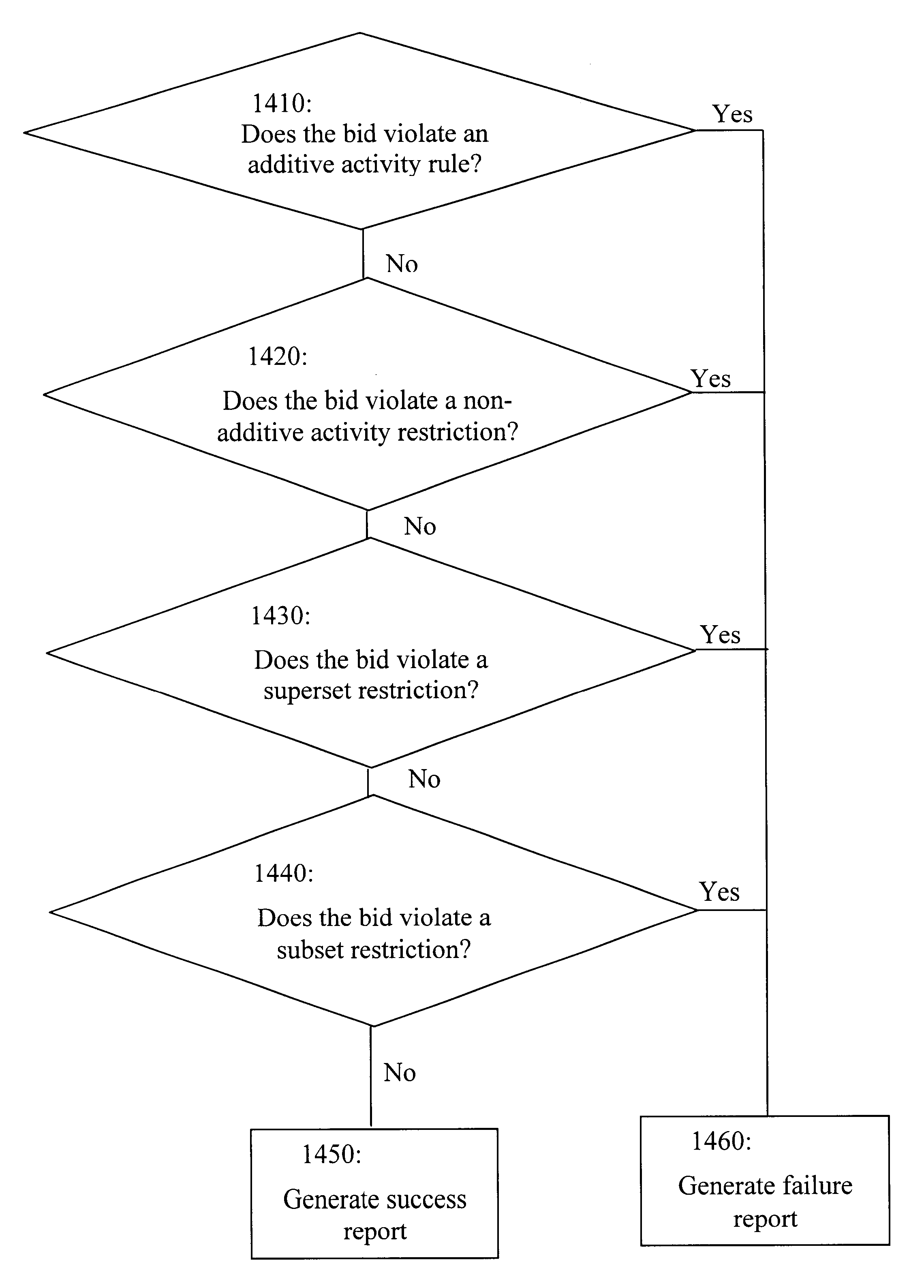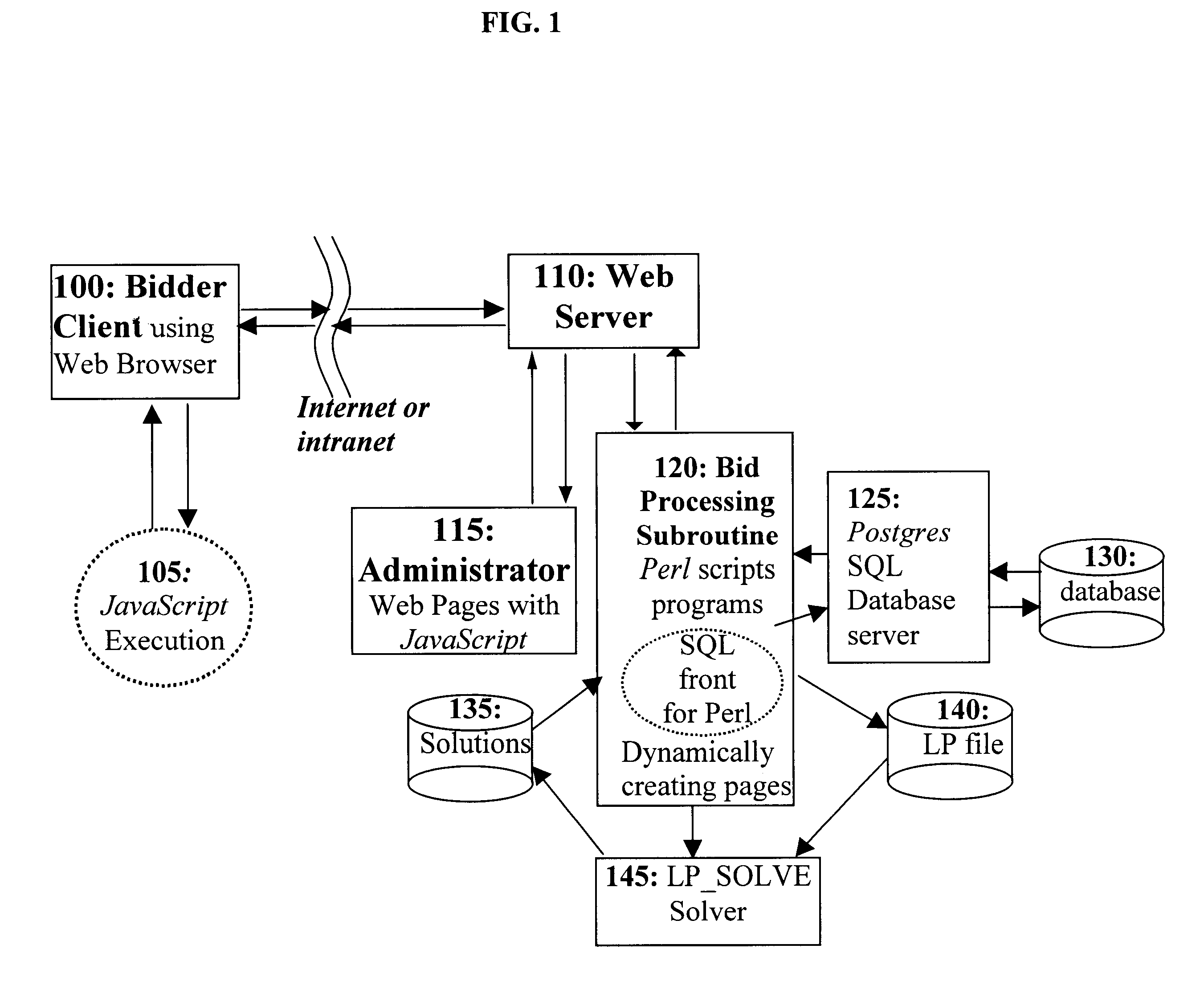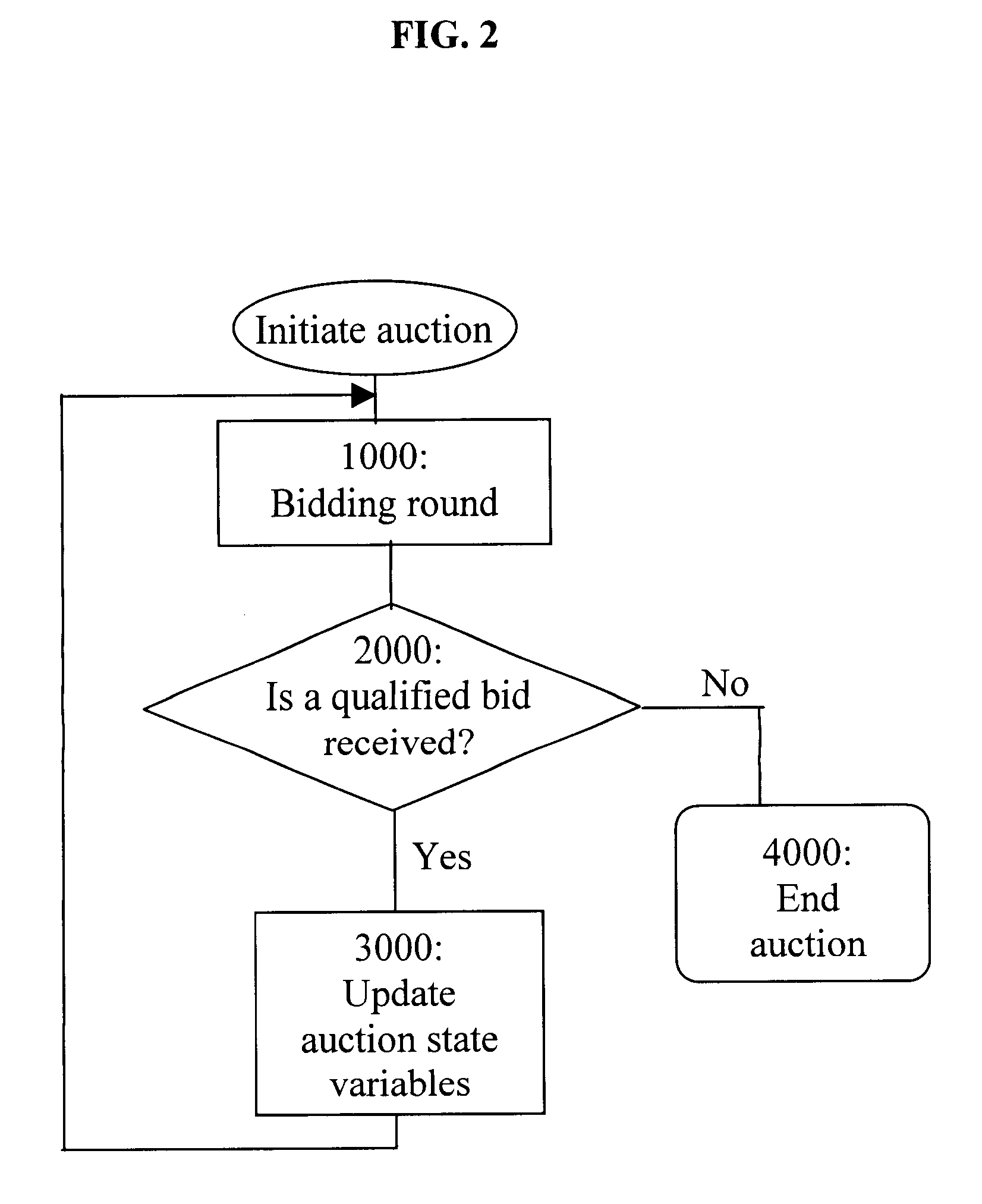However, maximizing revenues requires attracting potential bidders to participate and compete, which in turn requires holding out the possibility of significant profits for the winning bidder.
Although early economic thinkers understood that market-clearing prices of different goods could not be found individually without reference to one another, they offered no practical means to discover and set such prices.
The non-monotonic behavior of prices in the Walrasian auction can interfere with the convergence of the process, as published examples in the economics literature have shown.
Even when convergence does theoretically occur, it can be very slow because some prices will rise and fall many times before approaching their final values.
Finally, the convergence or the speed of convergence of the Walrasian auction process is not something that is guaranteed.
Consequently, although classical
economic analysis was useful in identifying weaknesses in non-simultaneous price setting, it ultimately had little to contribute to the implementation of real auctions for multiple goods.
However, theory has also shown that auctions that set prices individually for discrete, indivisible goods (e.g., a SAA) cannot lead to economically efficient outcomes if some of the goods are complements for some bidders, but substitutes for other bidders.
Indeed, the very idea that efficiency can be achieved by setting individual prices for goods fails in these circumstances because, as the theory shows, it may not be possible to balance supply and demand in all markets using prices.
For example, in a
radio spectrum auction, a
license to use a band of
radio spectrum in one particular area is of little practical value if the area is too small or the bandwidth too narrow.
When goods can be complements for some bidders and substitutes for others, the bidders for whom the goods are complements face an
exposure problem.
The
exposure problem in the SAA is that a bidder must risk becoming the high bidder on at least one good in a set of complements before it knows what it will have to pay to acquire the other goods in the set.
Overall, this can result in a loss for the bidder because A alone is not valuable to the bidder.
One consequence of the exposure problem is that bidders become reluctant to bid.
This is bad for two reasons: it tends to reduce the revenue enjoyed by the seller from the auction and it may result in a loss of overall value, as goods wind up in the hands of someone who does not actually value them the most.
Another consequence is that bidders may aim to
gain an artificial
advantage by creating an exposure problem for a competitor.
If they succeed, these manipulations lead to further losses of both revenue and overall value.
Any decision about how to structure the lots is both technically complex and a critical
determinant of the success of the auction.
Second, the smaller lots were acquired mostly by incumbents, that is, firms that already licensed some spectrum and offered
wireless telephone services.
The result was low prices for the poorly structured lots and a loss of overall value.
Decisions about how to structure lots in government-run auctions are politically charged because the lot packaging affects the likely auction outcome.
Conversely, without such a
license offering, MCI would have faced an exposure problem, because it would risk acquiring licenses without enough geographical coverage to enable it to establish a nationwide
wireless telephone
system.
Even an auctioneer with the best of intentions often has too little independent information to structure the lots effectively.
Because bidders may use these representations strategically to distort the outcome in their favor, the current politicized process of auctioneers defining lots has serious drawbacks.
Thus, even for such a modestly sized application, specifying values for all combinations becomes completely impractical, violating Vickrey's third condition.
This characteristic "price discrimination" that is built into the Vickrey auction raises a fatal objection for many government-run auctions, in which perceived fairness is commonly a paramount criterion.
The same objection is also significant in privately run auctions, because the auctioneer may worry that such rules impair its ability to attract bidders.
Another class of objections to the generalized Vickrey auction is that one of the other two enumerated conditions in Vickrey's analysis fails to hold, so his conclusions do not apply.
Indeed, real bidders are rarely certain about their valuations and may spend significant sums to improve their estimates and assessments in a large auction, violating Vickrey's second condition.
Also, most bidders have limited budgets and thus need to limit their bid totals to what they can afford, violating Vickrey's first condition.
When any one of the enumerated conditions fails, the outcome of the generalized Vickrey auction is not guaranteed to maximize total value.
Even when the conditions are met, the auction is not guaranteed to maximize seller revenues.
As discussed above, such lists of bids can be unreasonably long even in relatively small auctions.
Third, it may ease the problem of bidders who face significant budget restrictions and whose bids for some items depend not only on which other items they acquire but also on the amounts to be paid for those items.
A serious
disadvantage of existing dynamic combinatorial auctions, including the SAAPB, is that they create strategic opportunities for "large" bidders to
disadvantage smaller competitors.
The problem is that current dynamic combinatorial auctions allow a bidder that does not find the items to be complements to increase his chance of winning or of obtaining a relatively low price by bidding as if the items were complements.
If Bidder 3 were forced to bid in open auctions on the individual lots, he would very likely lose the bidding for each lot.
If Bidder 2 knows this, the coordination problem may prove intractable.
In practice, when the auction is being designed, the designer rarely knows much about the actual extent of the value synergies.
Consequently, even when the potential benefits of combinatorial bidding are very substantial, the designer may choose to forego them.
(Similarly, a buyer or its agent designing a buyer's auction faces analogous difficulties.)
Thus, the strategic opportunities for "large" bidders to
disadvantage smaller competitors is a major limitation to the general application of current dynamic combinatorial auction designs.
Third, static combinatorial bidding methods, such as the generalized Vickrey auction, can be acceptable and effective only under a set of highly restrictive conditions that severely limits their practical use.
On the one hand, such rules are thought to be important because the
computational problem of searching for the total-price maximizing set of combinatorial bids is very hard (i.e., in mathematical terms, it is an "NP-complete" problem) so that initial rounds of low bidding activity may be particularly damaging.
On the other hand, the construction of such rules involves subtle issues that do not arise in simple (non-combinatorial) auctions.
This consideration makes the construction of a useful activity rule much more difficult in combinatorial auctions.
However, the Arizona-Caltech rule is yet another additive activity rule that does nothing to reduce a bidder's strategic incentive to bid for a larger than optimal
package.
Because such rules do not distinguish between different collections of bids covering the same lots, they can never mitigate the problematic strategic incentive for combinatorial bidding.
 Login to View More
Login to View More  Login to View More
Login to View More 


